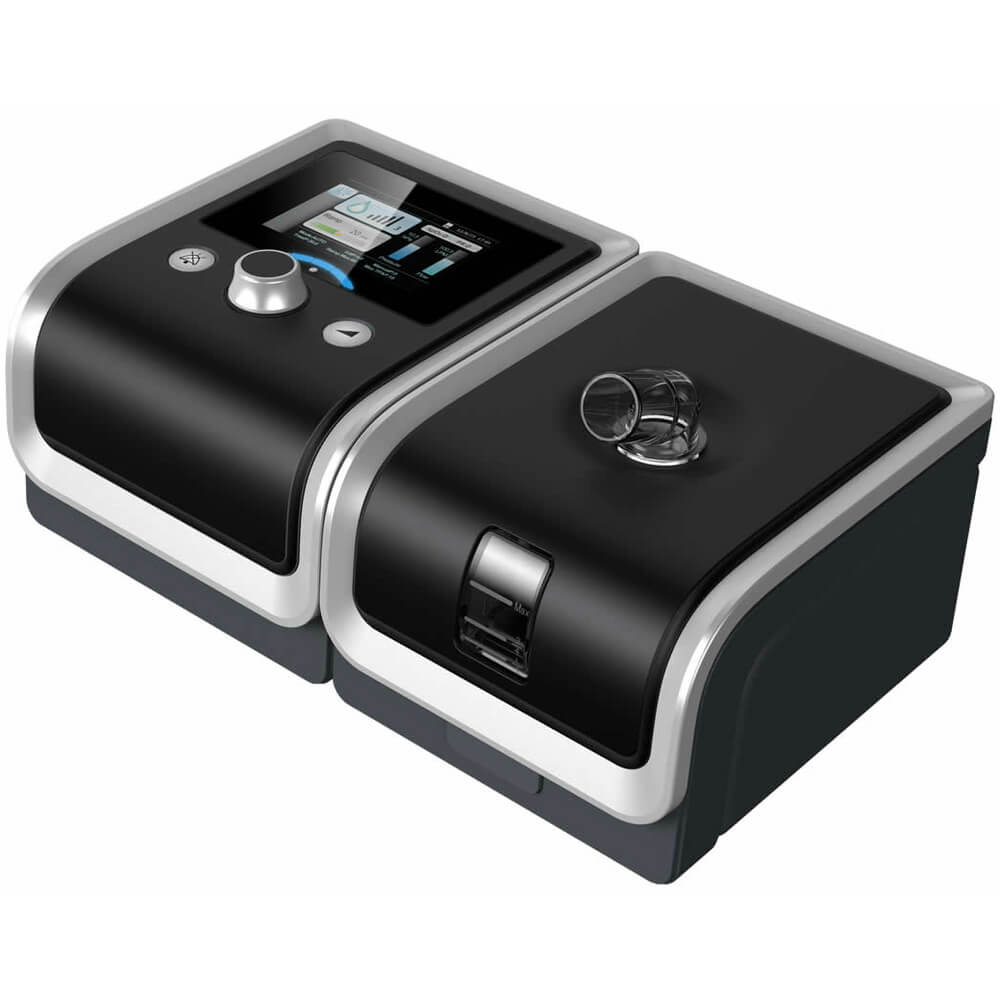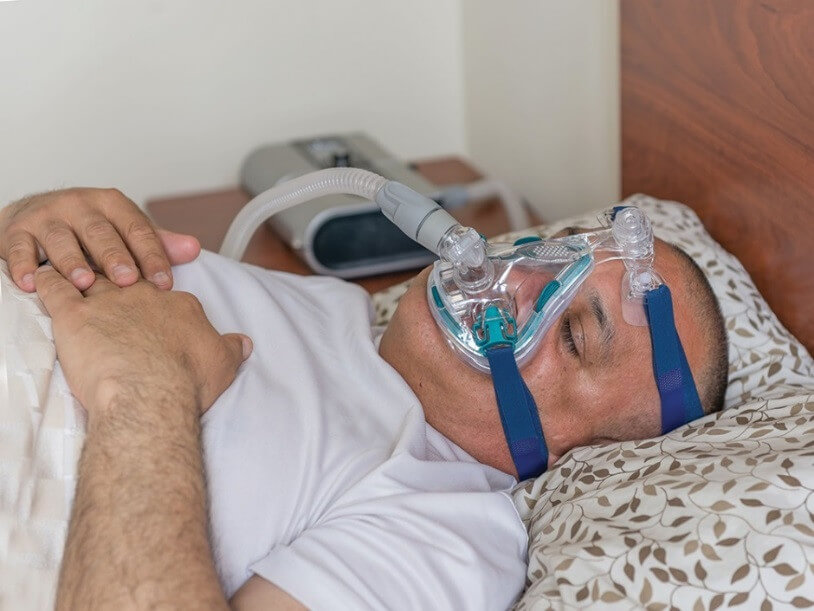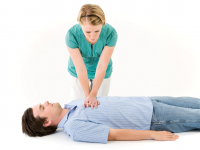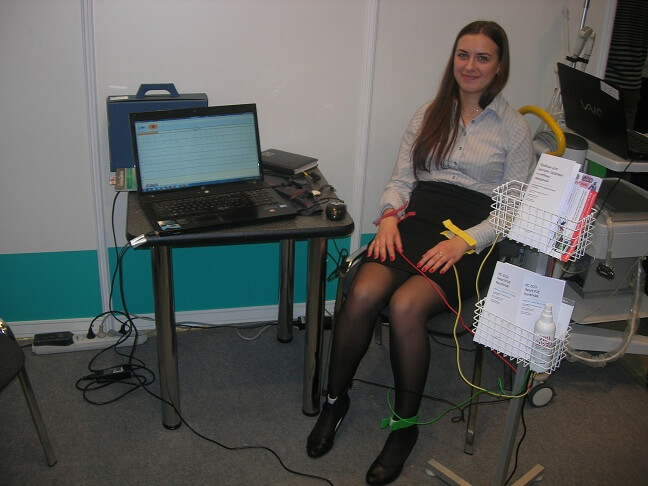What is CPAP or BIPAP therapy?
Author Ольга Кияница
2018-07-02
Continuous supply of air under positive airway pressure (CPAP) is a common method of treating obstructive sleep apnea. With this disorder, the back of the throat relaxes so much that while the person sleeps the airways narrow or even completely overlap. When this happens, the breath stops completely or is very shallow for a few seconds or longer.
A typical CPAP device contains an air pump in a housing lined with sound-absorbing material for quieter operation.The hose carries compressed air to the mask or bow pillow.
With the right selection of equipment, taking into account the available indications and contraindications, it is possible to significantly improve the condition of patients on sleep apnea. It is important to know the features of the choice of the device, that its operation was carried out with the maximum convenience.
Video: Sipap therapy is an effective way to cure snoring
What is CPAP and BPAP?
CPAP stands for "Constant Positive Airway Pressure", that is, "Constant positive airway pressure." Such a treatment is still known as mechanical ventilation of the lung with constant positive pressure.
In medicine, CPAP-therapy began to be used since 1981, when Professor Colin Sullivan from Australia was engaged in patients with sleep apnea.
Pauses during breathing during sleep (obstructive sleep apnea, OSA) are diagnosed quite often - up to 30 times or more every hour. The air that passes through the airway contributes to the formation of snoring, often so loud that it can disturb nearby people. OSA is a serious health disorder that increases the risk of high blood pressure, heart rhythm problems, heart disease, strokes and impotence. This also deprives the person of a deep sleep, which heals and energizes with vivacity. In the absence of a normal night rest, a person has to struggle with himself to stay awake during the day.
CPAP solves this problem by sending a continuous stream of air through the nose during the night rest, creating an air pressure that keeps the airways open. For most people, CPAP is an effective treatment for OSA.
Patients using CPAP often report that they feel much better, sleep well and have a greater charge of vivacity.

BPAP is a two-level device for measuring airway pressure and it is very similar to a CPAP machine with a small difference. Instead of providing a constant air pressure, as in the CPAP apparatus, the BPAP has a timer that reduces or stops the supply of air under pressure so that a person can exhale without a counter-flow of air. Although CPAP machines are more common, BPAP is very useful for patients with sensitivity to pressure.
Indications for use of CPAP and BPAP-therapy:
- Snore
- Obesity
- Sleep apnea
- Depression
- Hypertension
- Insomnia
- Impotence
- Diabetes
- Insufficiency of the respiratory system
- Diseases of the cardiovascular system.
It is possible to prescribe the therapy of CIPAP from several months to a year, and in extreme cases can be carried out until the end of life.
Manufacturers of CPAP often offer different models in different price ranges, and the CIPAP masks have many different sizes and shapes, so some users need to try a few masks before they can find the right one. The main equipment manufacturers for CPAP and BPAP-therapy are Breas (Sweden), Covidien (Ireland), DeVilbiss (USA), Fisher & Paykel (USA), ResMed (Australia, USA), Respironics (USA), Weinmann (Germany).
CIPAP therapy at home and in hospital settings
Unlike CPAP, used at home, in a hospital this type of treatment is used to improve the ability of the lungs to exchange oxygen and carbon dioxide with reduced participation in the act of breathing. This is due to the following impact mechanisms:
- During inspiration, positive airway pressure causes air to enter the lungs, so less breathing work is required from the respiratory muscles.
- Bronchioles and alveoli do not collapse at the end of the exhalation. These small airways and lung particles can collapse, since further expansion requires considerable pressure.
- Whole parts of the lungs, which otherwise would have been destroyed, are forcibly expanded and retained in this state. This process is called lung recruitment. Usually these collapsed areas of the lung have a reduced blood flow.Since these areas of the lungs are not ventilated, the blood passing through these areas is not able to effectively exchange oxygen and carbon dioxide. This is called the discrepancy of ventilation perfusion. Recruiting reduces the mismatch between ventilation and perfusion.
- An indirect positive pressure in the respiratory tract is created.
The amount of air left in the lungs at the end of the inspiration becomes larger (this is called the functional residual capacity). As a result, the chest and lungs expand, and in this position at rest, less effort is required for air exchange.
Video: CIPAP THERAPY: INDICATIONS FOR APPLICATION
Two-level pressure devices
VPAP or "BPAP" are devices that provide two levels of airway pressure: positive pressure (IPAP) and lower pressure (EPAP) for easier exhalation.
Sometimes the term BPAP is used for the parallel definition of APAP and CPAP. Also often BPAP is incorrectly called BiPAP. However, BiPAP is the name of a portable fan manufactured by Respironics Corporation; this is just one of many fans that can be embedded in BPAP.
BPAP operating modes:
- S (spontaneous). In spontaneous mode, the device starts IPAP when the flow sensors detect a spontaneous inspiratory effort, and then cyclically returns to EPAP.
- T (Timed). In the time mode, IPAP / EPAP starts automatically at the specified rate, usually expressed in breaths per minute (BPM).
- S / T (spontaneous / temporary). Like a spontaneous mode, the device starts IPAP when trying to breathe in a patient.But in spontaneous / temporary mode, a "backup" speed is also set so that patients still make the minimum number of breaths per minute, especially if they can not breathe spontaneously.
Exhalation devices of positive airway pressure
Nasal EPAP is a nasal device, an exhaled positive airway pressure
Modern EPAP devices have two small valves that allow air to pass through each nostril, but do not exhale; since the valves keep it in place with the help of the perennial glueing paws. The mechanism by which EPAP can work is not fully understood; it can be that resistance to nasal exhalation results in the accumulation of CO2, which in turn increases respiratory activity or exhalation resistance creates a pressure that causes the upper respiratory tract to open wider.
Components of the device:
- The flow generator (PAP machine) provides air movement.
- The hose connects the flow generator (sometimes via the built-in humidifier) to the interface.
- The interface (nasal or facial mask, nasal cushions or, less commonly, mouthpiece) ensures the intake of air directly into the user's airways.
What are the risks and / or side effects?
CPAP and BPAP therapy are safe. Any complications can usually be eliminated after minor adjustments. The most common complications are:
- Skin irritation if the mask is not properly matched or shakes the face
- Painful sensations, if the mask does not fit or rubs the face
- Eye irritation, if the mask is not suitable, which causes air leakage in the direction of the eyes
- Nasal congestion
In connection with the occurrence of such side effects, CPAP and BPAP therapy with caution is performed in the presence of a patient with sinusitis, infectious eye disease, hypotension, dehydration, bullous lung disease, etc.
Beard, mustache or unevenness on the face may prevent the mask from being sealed. Before applying the mask, the skin should be free of dirt and excess chemicals, such as oil or a skin cream. In some cases, shaving may be necessary to properly mask the face. However, such violations of the face most often do not interfere with the operation of the device or the positive effect of air flow on patients with sleep apnea.
For many people, the only problem with a loose mask is the subjective intolerance of too high a noise level near the face due to the outgoing air.
Sometimes a mask CPAP can promote the movement of the teeth, that is, on the upper and / or lower jaw - back. This side effect may worsen over time and may cause gastrointestinal upset in some patients. These violations of the face were called "Smashed Face Syndrome".
If there are any inconveniences in the use of the respirator, you should not hesitate to contact your doctor, which will help to avoid the above-mentioned side effects.
Video: CIPAP therapy: contraindications for use
Benefits of CPAP and BPAP therapy
Potential benefits of CPAP and BPAP therapy include:
- Reducing the risk of developing a number of serious diseases, such as heart disease, stroke and diabetes
- The best concentration of attention
- Less pronounced or lack of daytime sleepiness
- The best mood
- Less symptoms of depression
- Less snoring
Preparation for CPAP and BPAP therapy
Before starting treatment with CPAP or BPAP equipment, the attending physician will help determine the extent of the need for an artificial respiration device. It may be necessary to undergo additional testing in the sleep laboratory with a study of rest at night, which will determine whether or not there is obstructive sleep apnea.
During a test study during sleep, the technician can adjust the airflow to make it as suitable as possible. In this case, as a rule, it is enough to keep the airways open by the action of not too strong air flow.
It is important to talk with your doctor about the expectations of CPAP or BPAP therapy and, if necessary, ask any questions that may arise before using the ventilator.
Operation of CPAP or BPAP equipment
If the doctor prescribes CPAP or BPAP therapy, then you need to get in touch with a supplier of such medical equipment.The choice of equipment and CPAP mask should be approached with sufficient responsibility, since the comfort and efficiency of its use depend on this.
Useful tips for choosing CPAP or BPAP equipment:
- You need to tell your provider of medical equipment how you prefer to sleep (on your back, side or stomach). The seller can help you choose the right supplies that are necessary for a more comfortable use of the device.
- It is important to ask questions about how to set up the mask and the handset, how to use the hardware features and any other questions that arise regarding the purchase. The more information is received, the more comfortable it will be to feel when therapy begins.
- It should be ensured that the mask on the face lies correctly and without any discomfort. Thus it is necessary to consider, that the compressed air should not flow out from under a mask. If this happens, then it can irritate the eyes.
After starting the operation of CPAP or BPAP-therapy, you will have to get used to the mask and air flow for a while. But a little later the quality of sleep will be much better. Later it will be possible to notice, that the mood became more cheerful, and energy has considerably increased. Also the rested condition will allow to spend more sated and actively every day of the life.
In the future, if necessary, a doctor or a supplier of medical equipment will be able to ask new questions and / or adjust the operation of the equipment. In addition, you will need to familiarize yourself with some basic maintenance techniques that will allow it to work correctly and for a long time.

Equipment service
- Every day , you should clean the mask with a damp soapy cloth.
- Every week it is necessary to empty the humidifier chamber and wash it with warm soapy water. Also for cleaning the chamber, you can use a solution of 1 part vinegar in 3 parts water, which fill the tank for 30 minutes. After this you should rinse thoroughly. (DO NOT use cleaning chemicals or bleach).
- The hose is cleaned by soaking warm soapy water in it for 30 minutes. Then you need to thoroughly clean the spare part and hang it to dry.
- The filter is checked regularly, and in case of contamination it must be replaced.
Terms of replacement
Manufacturers recommend replacing consumables as follows:
- Nasal mask: monthly
- Air filter: every 1 - 3 months
- The tube supplied to the mask: every 3-6 months
- Headgear, chin and water chamber: every 6-12 months
Be sure to talk with a representative of your insurance company about how often you can replace consumables for CPAP or BPAP equipment. In most cases, medical equipment is replaced every 5 years.
Video: Patient Recall | After 3.5 years of CPAP therapy | Treatment of snoring and sleep apnea
Similar articles

In critical situations, when a person does not have a heart rhythm or respiration, cardiopulmonary resuscitation is performed first. With the help of standard techniques, you can help the patient avoid death, or at least support his life activity until the arrival of the medical staff.

Modern technologies allow the most thorough study of various organs and tissues, including the cardiovascular system. Without timely and correct diagnosis sometimes it is very difficult to put the exact diagnosis. At the same time, it is extremely important to do everything in time to ensure effective treatment after the study.

The most critical conditions are considered shock, because with their development a person can die very quickly. If emergency care is not provided, including cardiogenic shock, death occurs within a few minutes. The occurrence of a violation is primarily associated with cardiovascular diseases.
